Rievaulx Abbey a ruined Cistercian Abbey in Yorkshire
We had just visited Helmsley Castle in North Yorkshire, decided to take a little drive, and saw a sign for Rievaulx Abbey (pronounced ree-vo). So we took the turn and drove through this incredible wooded dale. Coming out of the woods, we felt like we had stumbled into ancient Briton. The views from the top of the hill were striking and rising up behind the thatched cottages was the immense ruin of Rievaulx Abbey.
Rievaulx is one of the most famous of Yorkshire Abbeys. Rievaulx looms over this tiny village, whose population stands at around 100. The Abbey itself was closed and destroyed when Henry VIII dissolved the monasteries. The Earl of Rutland who carried on with the iron-smelting works that the monks had started purchased the grounds.

Where is Rievaulx Abbey?
The Abbey is set in a remote valley in the North York Moors National Park near Helmsley around 50 minutes from the City of York and is 2 1⁄4 miles N of Helmsley, on minor road off B1257.
The History of Rievaulx Abbey
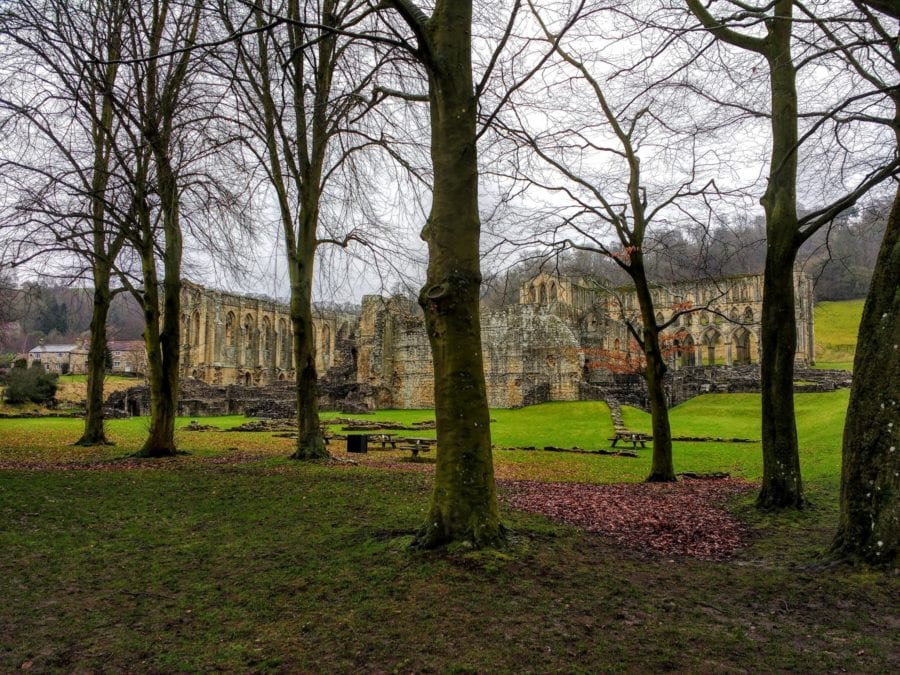
After WWII, the smelting works closed and the village became more agricultural. Many of the buildings, which had used the stones from Rievaulx Abbey to build, remain such as the old Watermill. The Miller’s Cottage is still standing and almost all the buildings in the village were built with materials scavenged from the ruin of the Abbey.
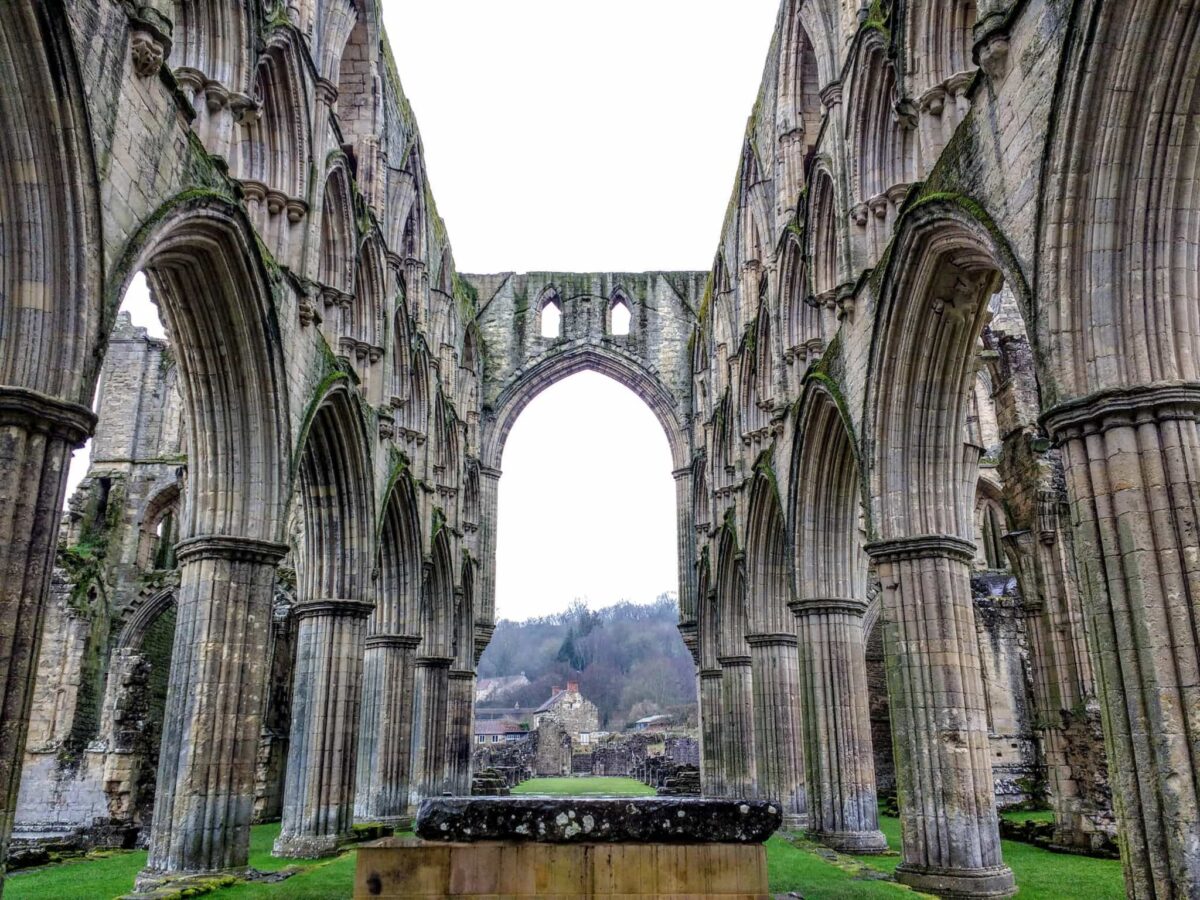
Rievaulx was a Cistercian abbey and one of the greatest Abbeys in England until Henry VIII seized it. English Heritage manages the current ruin. It is often used as a filming location and was used in the film Transformers: The Last Knight (2017).
The Abbey lies in the open area from the dale by the River Rye. Apparently, the monks diverted part of the river in order to have enough flat land to build on. Over the years, they diverted the river again in order to build up their profitable lead and iron mining concerns.
Rievaulx Abbey was founded in 1132 and was the first Cistercian abbey to be established in the north of England. It quickly became one of the most powerful and spiritually renowned centres of monasticism in Britain, housing a 650-strong community at its peak in the 1160s under its most famous abbot, Aelred.
Saint Aelred of Rievaulx, was a writer, historian, and outstanding Cistercian abbot who influenced monasticism in medieval England, Scotland, and France. His feast day is celebrated by the Cistercians on February 3. He became abbot of the monastery of Rievaulx in the Diocese of York in 1147 and was a spiritual writer who specialised in writing about friendship as an image of the relationship between God and each person.
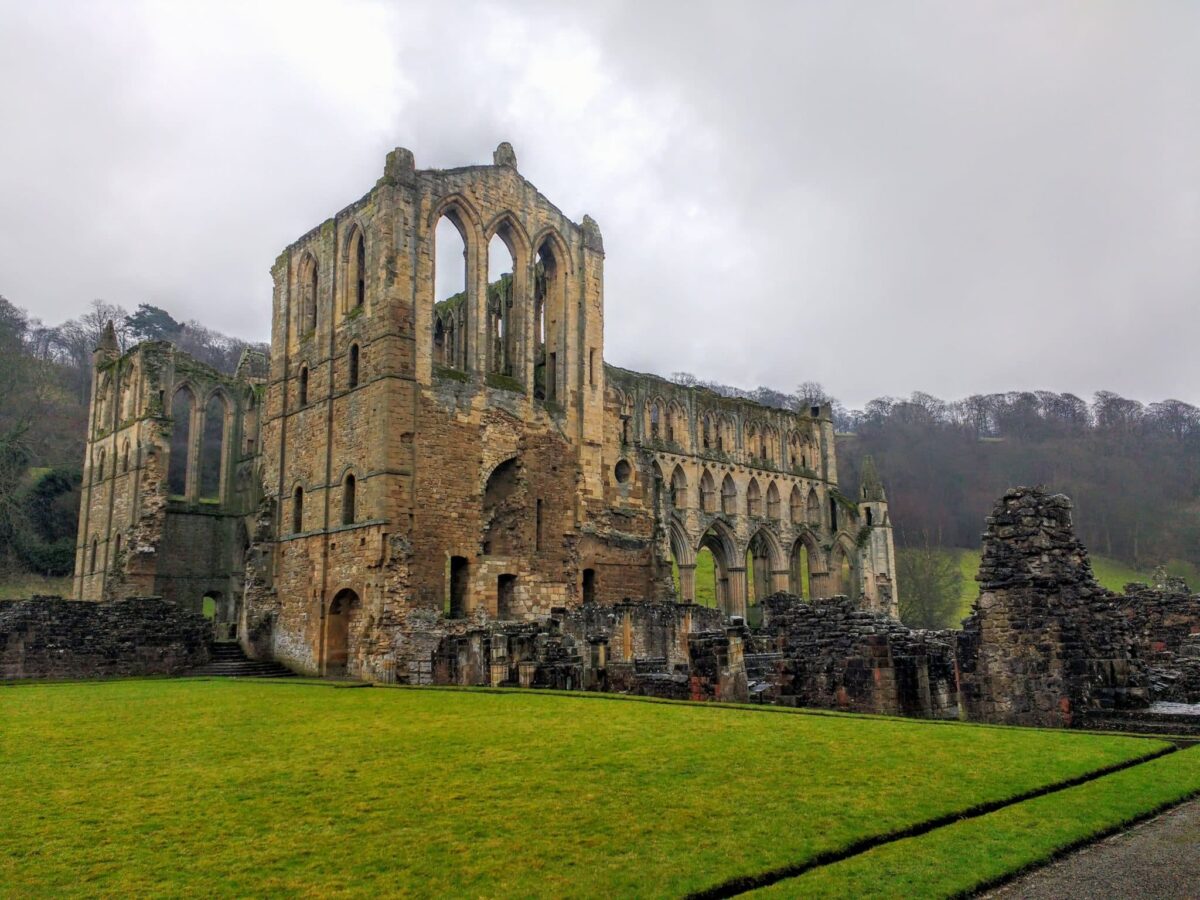
The monks also reared sheep here and sold their wool to buyers all over Europe. This allowed Rievaulx Abbey to become one of the wealthiest in England, housing over 140 monks and many more lay brothers. The power of this wealth gave them over 6,000 acres of land and they established daughter houses in Scotland and England.
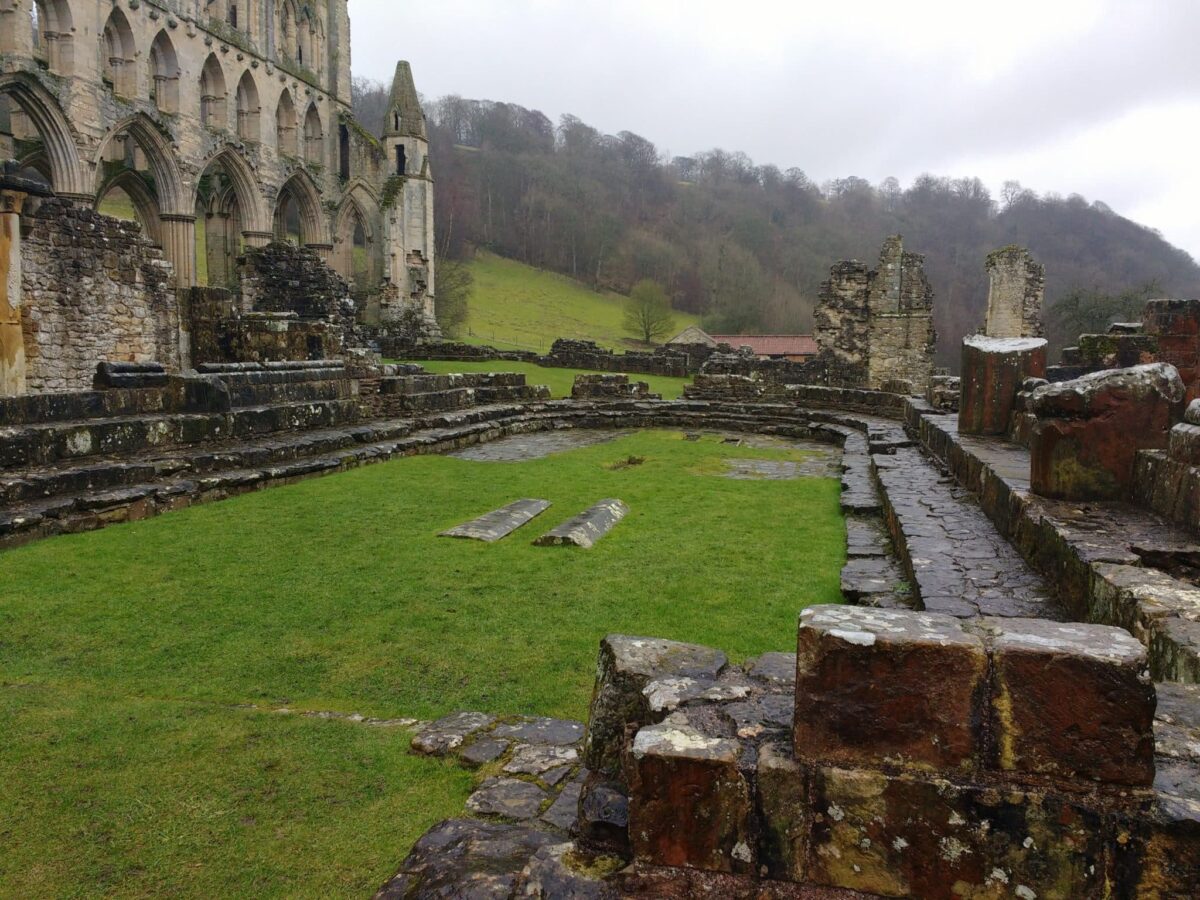
However, by the end of the 13th century, Rievaulx Abbey had incurred massive debts for the building of the Abbey and had lost a lot of its wealth due to animal epidemics that affected its sheep. Scottish Revers also raided the Abbey in the early 14th century and then the Black Death decimated the ranks of the monks and lay brothers.
By the 15th century, the Cistercian practices of strict observance according to the Rule of Saint Benedict had been abandoned in favour of a more lavish lifestyle. The monks were allowed to eat meat and better accommodations were built for them to live in. The Abbot himself took on a more luxurious household and made sure he was treated extremely well.

The dissolution came in 1538, the confiscated buildings were sacked and ruined, and the proceeds were put into Henry VIII’s coffers. The ruined buildings and land were given to the Earl of Rutland who was one of Henry’s advisors and then in later years passed to the Duncombe family.
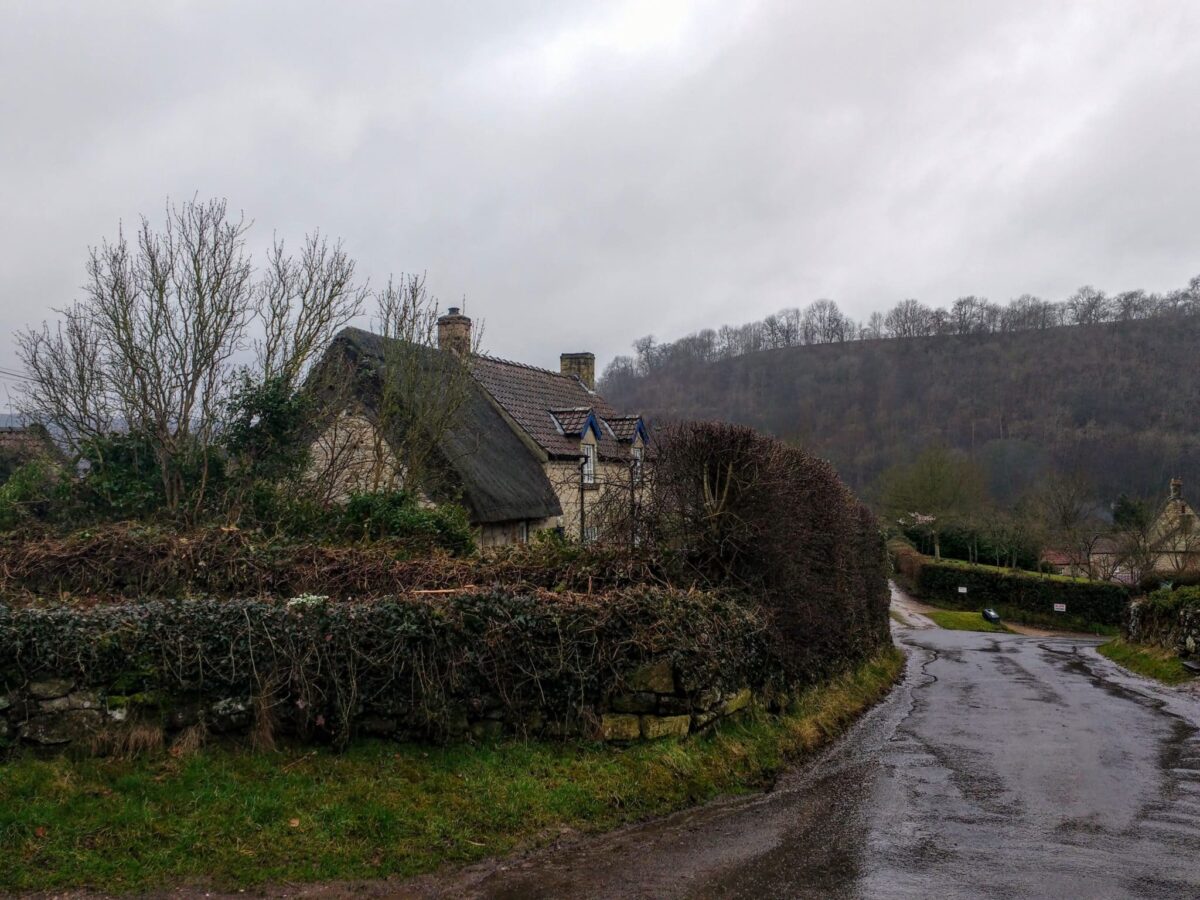
Rievaulx Abbey is in ruins but this is an idyllic part of the North Yorkshire countryside. The ruins are incredibly atmospheric and even though it was raining, it was more of a mist making the walk through this immense sight a step back in time.
Is Rievaulx Abbey haunted?
According to the locals at Rievaulx, you can hear bells ringing (there are no bells at Rievaulx and haven’t been for over 400 years and the sounds of a heavenly choir can be heard. It is also said that chanting sounds are heard at dusk and a ghostly monk figure has been seen.
Visiting Rievaulx Abbey
There is a lovely walk from Helmsley Castle to Rievaulx Abbey that follows in the footsteps of Saint Aelred who was one of the county’s most famous abbots. You can also drive to Rievaulx where you will find a Visitor’s Centre and plenty of parking. You may get lucky and see a film shoot when you are there.
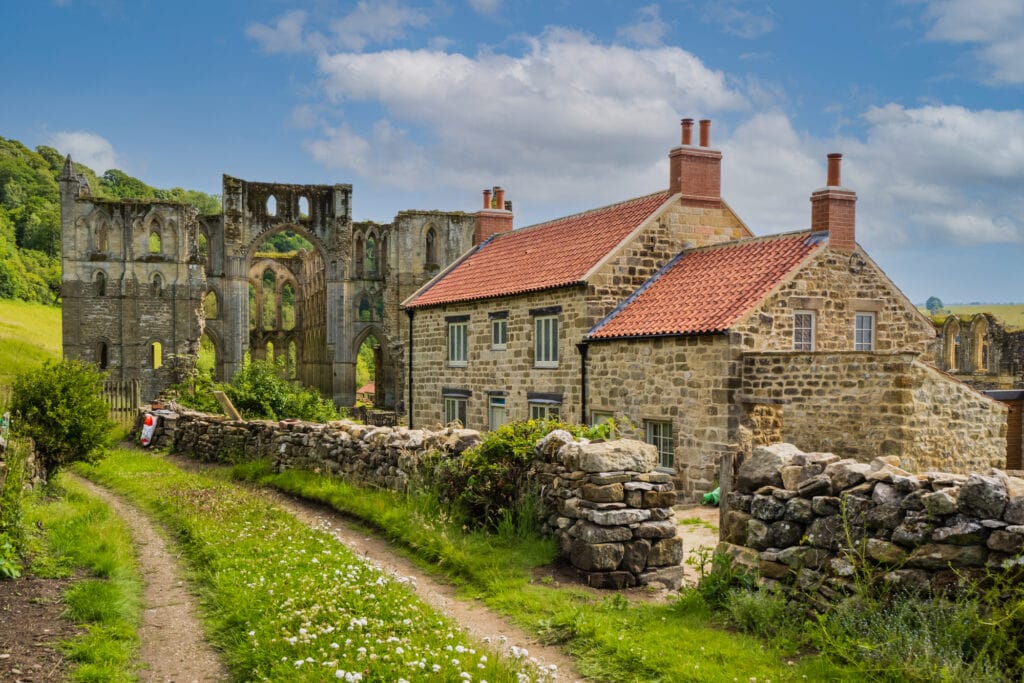
Inside the visitors’ centre is a great little gift shop and you can buy a pass to all the English Heritage sites.
The indoor museum features artefacts, which tell the story of the Monks at Rievaulx Abbey along with the drama of the dissolution and how they managed to become the richest Abbey in England through their mining and smelting operations.
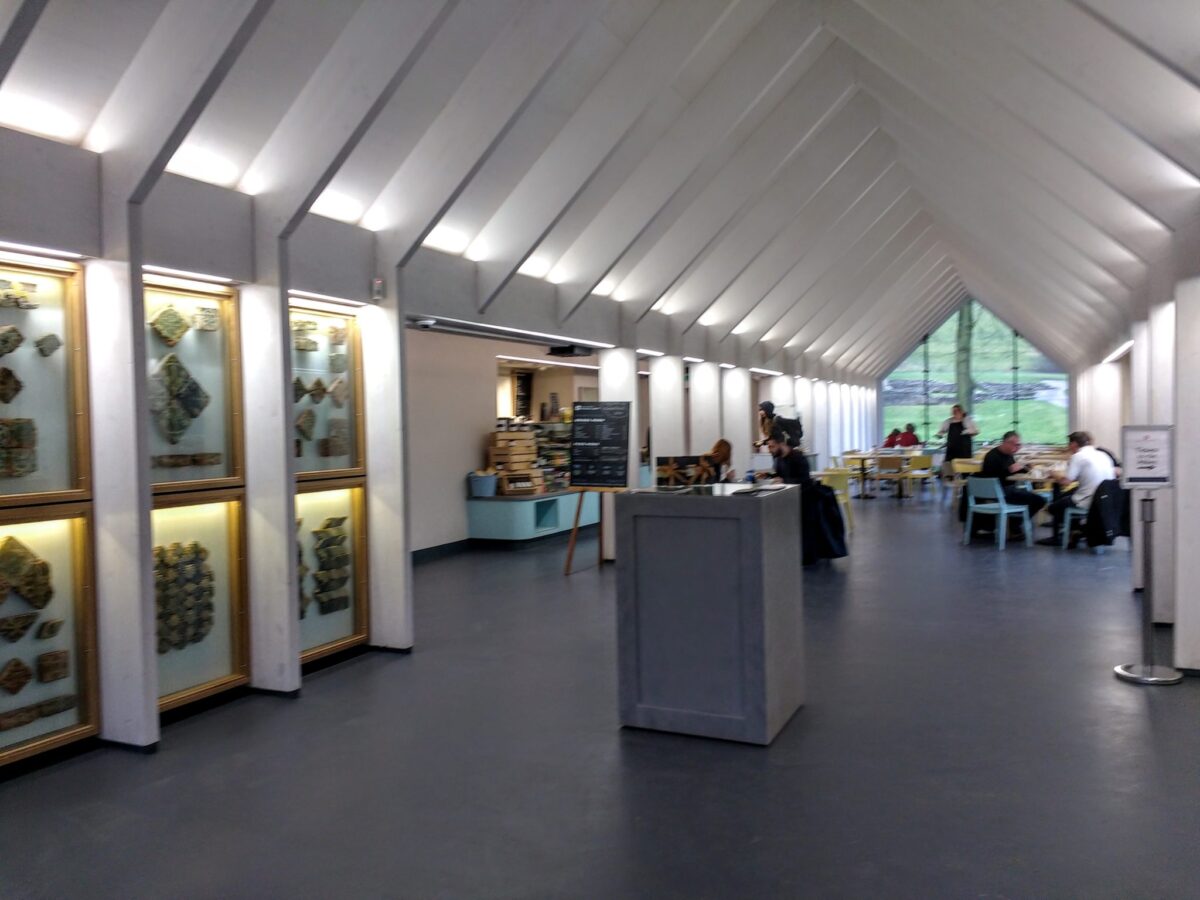
The site does have some really good audio tours and the site is accessible for the most part. The paths are loose gravel and there are some steps into and around various enclosures. There is also a small rise or hill throughout the site, but there is no doubt that those with mobility issues can enjoy Rievaulx from a wheelchair.

Rievaulx Abbey tearoom
There is a little tea room in the Visitor’s centre that serves light meals and soup or enjoys a coffee and a scone while taking in the view through the picture window.
The cost of touring the Abbey is Adult £11.00. Child £6.50, and if you visit English Heritage’s Facebook page you can save 20% off the membership fee.

Drive the stunning Yorkshire Coast when visiting this county
Rievaulx Terrace
You can also take time to visit Rievaulx Terrace which was part of the Duncombe Lands. The Earl had created beautiful garden terraces on the land with sweeping views. When the Earl died his estate was inherited eventually by his nephew Thomas.
When Thomas returned to Rievaulx in 1747 he decided to develop the Terrace even further and of course to outdo his father’s more formal terrace and temples at Duncombe Park a few miles away.

At Rievaulx Terrace the two main features are Palladian follies that stand at either end.
At the north end, you will see a rectangular Ionic Temple which was inspired by the Fortuna Virilis that Thomas had seen in Rome. This would have been a place where Thomas entertained his guests and dined al fresco and the central table is still set for a meal. The basement of the Temple housed a kitchen and living quarters but today it hosts an exhibition of English landscape design.
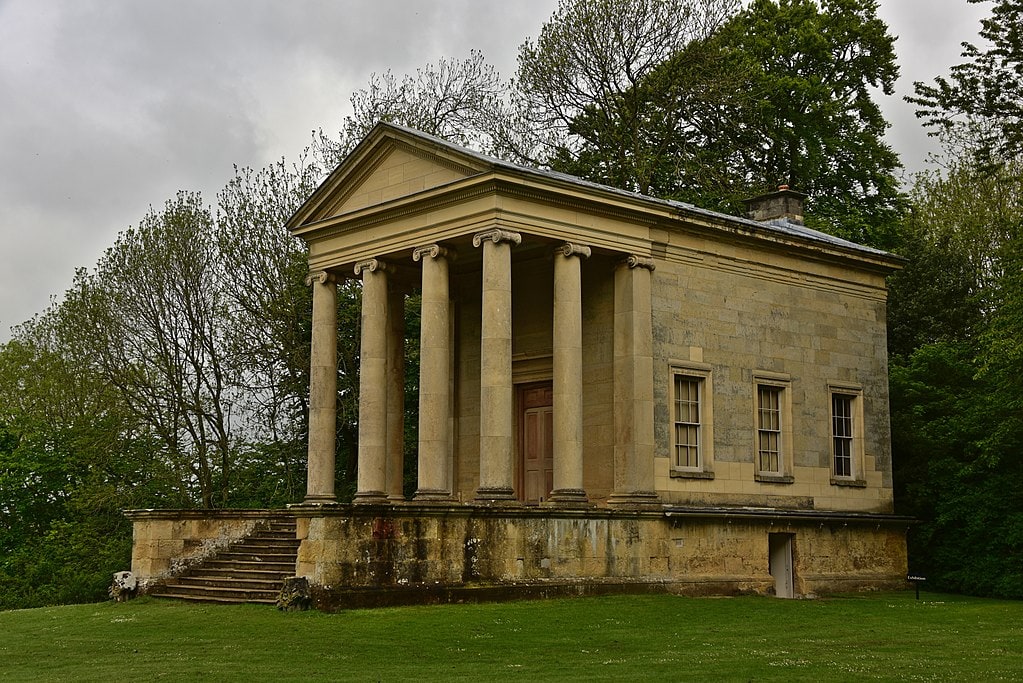
At the South end of the Terrace is a Doric or Tuscan Temple complete with medieval tiled floors and painted ceilings. This temple is thought to be a small scale version of the mausoleum at Castle Howard which stands a few miles away. The pavement on the floor of this temple came from the choir of Rievaulx Abbey.

The standard entry fee to the terraces is £6.25 and please note that this fee is separate from the fee to visit Rievaulx Abbey although if you purchase an English Heritage card it will cover the cost of these entry fees and a lot more.
Visiting Yorkshire and the many historic places should be on everyone’s bucket list. The oldest medieval street in the world the Shambles is in York and makes a fascinating walk through time.
If you go further to West Yorkshire you can tour the home of the Brontes who lived and wrote in Haworth or see Anne Bronte’s grave in Scarborough.
Visiting York itself and enjoying the range of historic sites from Castles to the Shambles, take a Hop on Hop off bus and from there you can suss out all the sites you want to head back to.
One thing we loved about Yorkshire was the market towns and villages, like Pickering and Malton. Usually set up in the centre of the village market days meant that we could pick up some superb Yorkshire baking from pies to cheese straws. At these market villages not only can you get your fresh veg but new underwear if need be.
North Yorkshire has an array of sacred sites and Rievaulx Abbey is only one of them. Have you visited any other ruined abbeys or churches in Yorkshire?
You might also like
The Shambles York the oldest medieval street in the world
Waterfalls in the Yorkshire Dales
37 Fabulous things to do in York
16 Evocative Ruined Abbeys in Yorkshire
Helmsley Castle an atmospheric ruin in North Yorkshire
Whitby Abbey Exploring the gothic masterpiece
Visiting Bronte country, home of the Bronte sisters
Scarborough England – 31 entertaining things to do
14 Things to do in Whitby England
All the best things to do in Pickering North Yorks
Discover the outstanding Yorkshire Coast

